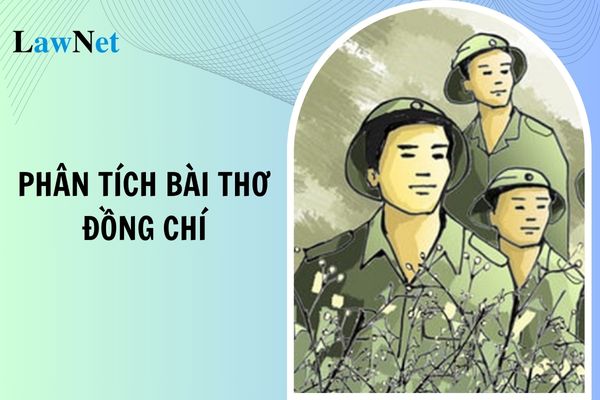What are guidelines on analysis of the poem "Đồng chí" for grade 9 students in Vietnam? What literary competencies must grade 9 students in Vietnam achieve?
What are guidelines on analysis of the poem "Đồng chí" for grade 9 students in Vietnam?
"Đồng chí" by Chinh Huu is a prominent work in Vietnamese literature, showcasing the camaraderie and combat life of soldiers during the resistance against the French. Below is a guide to analyzing the poem "Đồng chí":
|
Guidelines on analysis of the poem "Đồng chí" 1. Context of Creation Quê hương anh nước mặn, đồng chua Làng tôi nghèo đất cày lên sỏi đá These lines clearly depict the impoverished backgrounds of the soldiers. |
Note: The above information is for reference only!

What are guidelines on analysis of the poem "Đồng chí" for grade 9 students in Vietnam? What literary competencies must grade 9 students in Vietnam achieve? (Image from the Internet)
What literary competencies must grade 9 students in Vietnam achieve?
According to the General Education Program for Literature issued together with Circular 32/2018/TT-BGDDT, grade 9 students are expected to achieve the following literary competencies:
- Understand the message, ideology, emotions, and attitude of the author in the text; recognize literary scripts, novels, and Nôm poems, regulated verse, and free verse, tragedies, and comedies; content and form of literary works, literary images;
- Identify and analyze the effect of some formal elements and artistic techniques in each literary genre (the combination of narrator's speech and character's speech, point of view, conflict, poetic rules, structure, vocabulary, lyrical emotional circuit;
- Rhetorical devices such as repetition, wordplay, irony, paradox). Recognize some general features of the history of Vietnamese literature; understand the impact of literature on one's life.
What Vietnamese language knowledge is included in grade 9 curriculum?
According to the General Education Program for Literature issued together with Circular 32/2018/TT-BGDDT, the Vietnamese language knowledge for grade 9 students includes:
1.1. Differentiating meanings of some easily confused Sino-Vietnamese elements (e.g., "đồng" in "đồng dao", "đồng âm", "đồng minh"; "minh" in "thanh minh", "minh oan", "u minh")
1.2. Allusions, idiomatic expressions (e.g., "Ngưu Lang - Chức Nữ," "Tái ông thất mã"): characteristics and effects
1.3. Meaning and usage of abbreviations for important international organizations (such as UN, UNESCO, UNICEF, WHO, WB, IMF, ASEAN, WTO,...)
2.1. Sentence structure transformation and expansion (change order of sentence components, add supplementary components,...): characteristics and effects
2.2. Choosing between simple and compound sentences, types of compound sentences, conjunctions to link compound sentence clauses
2.3. Elliptical and special sentences: characteristics and functions
3.1. Rhetorical devices like wordplay, alliteration, and rhyme: characteristics and effects
3.2. Differences between direct and indirect speech; punctuation usage in direct and indirect speech
3.3. Text types and genres
- Narrative texts: storytelling, mimicking a story read; retelling story content from a comic
- Expressive texts: eight-syllable poetry; paragraphs reflecting on an eight-syllable poem
- Argumentative texts: the role of arguments, reasoning, and evidence in expressing the content of an argumentative text; articles presenting issues and solutions; analysis of a literary work
- Informational texts: presenting ideas and information in text; expression effectiveness of non-linguistic means in informational texts; explaining a social phenomenon; illustrating a scenic spot or historical site; advertising, brochures
3.4. Some notes on referencing, citing materials to avoid plagiarism
4.1. Language development: new words and new meanings
4.2. Basic understanding of Vietnamese script: Nom script and Quoc Ngu script
4.3. Non-linguistic communication means: images, data, charts,...

